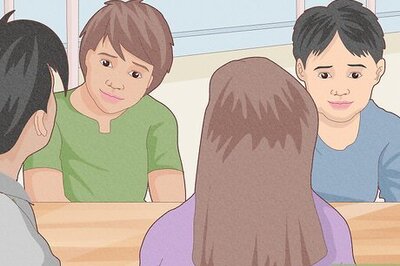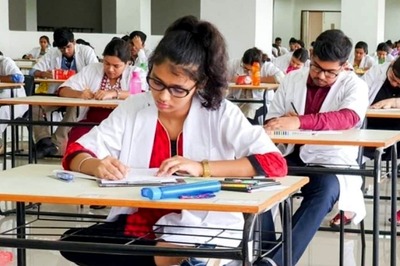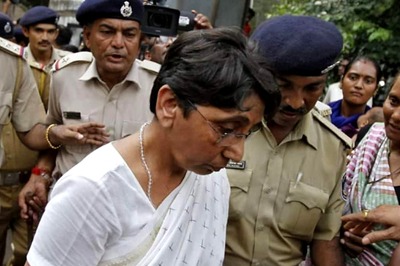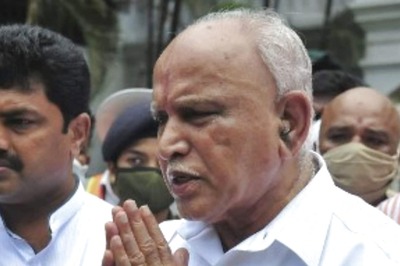
views
Muscular Dystrophy is a group of genetic disorders that cause progressive muscle weakness and degeneration. It affects people of all ages, genders, and ethnicities, and there is currently no cure.
Defining Muscular Dystrophy
A group of genetic disorders that weakens your body’s musculoskeletal system, leading to progressive muscle degeneration and weakness is known as Muscular Dystrophy. Mutations in the genes that produce essential proteins for muscle function are what lead to the disorder. Many people in India suffer from muscular dystrophy, thus there is an urgent need for more education and assistance for those who are affected.
“The symptoms and progression of the various kinds of muscular dystrophy differ. Duchenne muscular dystrophy (DMD) and Becker muscular dystrophy (BMD) are the two types of MD that are most prevalent in India. The most severe type of muscular dystrophy, known as DMD, primarily affects young boys. Among other symptoms, it results in loss of muscle function in the arms, legs, and pelvis. The milder form of BMD, on the other hand, affects both men and women and often manifests later in life,” says Dr M. Lakshmi Lavanya, Consultant Neurologist, Kamineni Hospitals, Hyderabad.
In muscular dystrophy, abnormal genes (mutations) interfere with the production of proteins needed to form healthy muscle. “There are many kinds of muscular dystrophy. Symptoms of the most common variety begin in childhood, mostly in boys. There is no cure for muscular dystrophy but medications and therapy can help manage symptoms and slow the course of the disease,” adds Dr Rashmi Devaraj, Consultant Neurologist, Apollo Specialty Hospital, Jayanagar, Bangalore.
Signs and symptoms of muscular dystrophy
Specific signs and symptoms begin at different ages and in different muscle groups, depending on the type of muscular dystrophy. “Signs and symptoms, which typically appear in early childhood, might include frequent falls, difficulty rising from a lying or sitting position, trouble running and jumping, waddling gait, walking on the toes, large calf muscles, muscle pain and stiffness, learning disabilities and delayed growth,” adds Dr Devaraj.
Dr. Sorabh Gupta, Consultant, Neurology, Max Super Speciality Hospital, Dehradun explains the signs of muscular dystrophy:
- Stretched-out calf muscles
- Odd way of walking (like waddling)
- Difficulty in swallowing
- Heart issues including heart failure and Arrhythmia (Cardiomyopathy)
- Learning challenges
- Loose or stiff joints and muscle ache
- Bent spine (Scoliosis)
- Breathing difficulties
“Children with muscular dystrophy experience difficulty in activities such as walking, standing, and even writing, and eventually become wheel chair bound and bedridden,” says Dr. Venkataramana N K, Founder and Chairman, Ayu Health – BRAINS Super Specialty Hospitals.
Also Read: Millet Recipes For Patients Suffering From Type 2 Diabetes
Faulty genes
People with a family history of muscular dystrophy are at higher risk of developing the disease or passing it on to their children. The life span of the severe variety that is Duchenne muscular dystrophy, is usually limited to the second decade whereas the Becker variant has a life span of 30 to 40 years.
Your ability to walk and carry out regular tasks like brushing your teeth may be hampered as muscles weaken and atrophy with time. Your heart and lungs may be affected by the illness as well. The main sign of muscular dystrophy is muscle weakening. The condition can affect various muscles and body components, depending on the type.
Frequently, muscular dystrophy runs in families. “A mutant (changed) gene that causes muscular dystrophy may be inherited by a child whose parent has the disease. Even though they do not have muscular dystrophy, some people carry the faulty gene. The offspring of these healthy individuals (carriers) may get the disease if they inherit the faulty gene. The majority types of muscular dystrophy are caused by genetic abnormalities or alterations. Even if neither parent has the illness, one or both parents may convey a defective gene to their offspring,” says Dr Gupta.
Management
Dr Venkataramana N K, Founder and Chairman, Ayu Health, BRAINS Super Specialty Hospitals, says, “Early diagnosis and proper classification of the disease can slow down the progression and it can be hoped that in the future, advances in gene editing technology and regenerative medicine will allow for better solutions in treating muscular dystrophy. While there is no cure for muscular dystrophy, research into repurposing drugs and finding new solutions continues, at the moment there is a targeted therapy that controls the gene is available for one specific subgroup of muscular dystrophy.” In the meantime, patients require supportive treatment and emotional support, and families need help coping with the challenges of caring for a child with this condition.
Testing
Since the symptoms of muscular dystrophy are frequently mistaken for those of other disorders, diagnosis can be difficult. Genetic testing is typically necessary for a certain diagnosis, however, it can be expensive and difficult to obtain in many regions of India. This lack of access to correct diagnostics and medical care can lead to misdiagnosis and insufficient treatment for persons affected by muscular dystrophy.
Read all the Latest Lifestyle News here




















Comments
0 comment